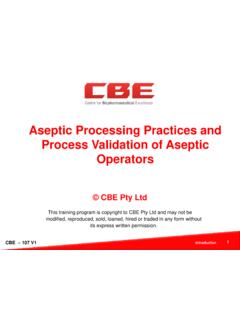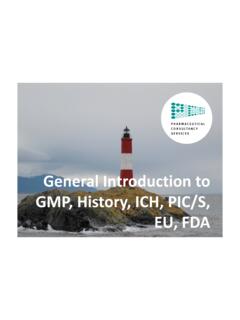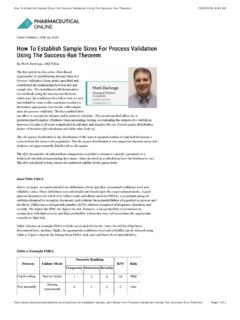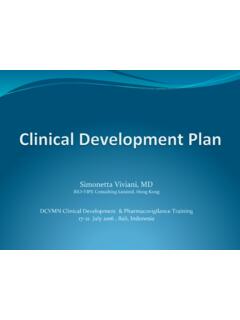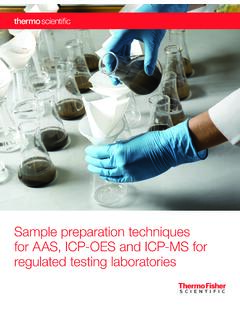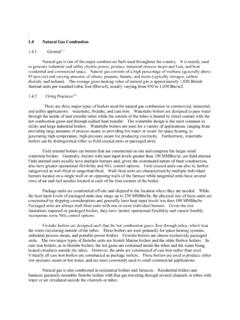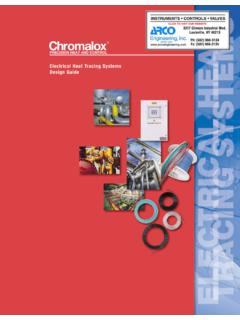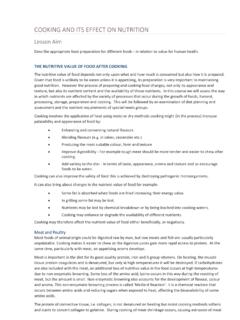Transcription of Validation and Management of Heat Sterilization
1 CBE 106 V1 Validation and Management of heat Sterilization (Autoclave and Dry heat Oven) CBE Pty Ltd This training program is copyright to CBE Pty Ltd and may not be modified, reproduced, sold, loaned, hired or traded in any form without its express written permission. 1 Introduction CBE 106 V1 2 Module Outcomes On completion of this module the participant should be able to: List the essential cGMP requirements for sterilisation Validation specifically autoclaves and hot air sterilisers/dry hear ovens List the IQ, OQ and PQ requirements for heat sterilisation processes Differentiate between two sterilisation approaches (overkill and bioburden) Calculate and use an Fo for autoclave sterilisation Validation Interpret a basic print-off for a sterilisation process. Introduction CBE 106 V1 Module Topics How does heat Sterilization work Critical process parameters and metrics Developing a Validation process / cycle Bioburden reduction vs.
2 Overkill cycles Content of protocols and reports Introduction CBE 106 V1 Useful References PIC/S Guide to Good Manufacturing Practices - PE 009 2014 Annex 1 FDA Recommendations for Submitting Documentation for Sterilisation Process Validation , November 1994 ANSI/AAMI/ISO 11134 Sterilisation of HealthCare products requirements for Validation and routine control Industrial moist heat sterilisation (1993) ISPE Good Automated Manufacturing Practices (GAMP) BP Appendix XVIII Methods of Sterilisation - Monograph for Biological Indicators ANSI/AAMI ST79:2006 Comprehensive guide to steam sterilisation and sterility assurance in health care facilities AAMI TIR 13:1997 Principles of industrial moist heat Sterilization Regulatory Agencies CBE 106 V1 Useful References PDA Technical Monograph 1 Validation of Steam Sterilisation Cycles 2007 PDA Technical Report 3, (TR3) Validation of Dry heat Processes Used for Sterilization and Depyrogenation (under revision) USP <1035 > Biological Indicators USP <1211> Sterilisation and Sterility Assurance of Compendial Articles Regulatory Agencies CBE 106 V1 Define Sterile (IJ Pflug) Sterile Free from viable microorganisms.
3 Sterilisation Any physical or chemical process which destroys all life forms, with special regard to microorganisms (including bacteria and sporogenous forms), and inactivates viruses. Therefore the terms "sterile" and " Sterilization ", in a strictly biological sense, describe the absence or destruction of all viable microorganisms. In other words, they are absolute terms: an object or system is either "sterile" or "not sterile". The destruction of a microbial population subjected to a Sterilization process follows a geometrical progression to be 100% certain the article is sterile it would require infinite sterilisation. Sterility Assurance Level (SAL) For practical purposes the probability of finding a non-sterile unit (PNSU = Probability of Non Sterile Unit) must therefore be lower than 10-6. 6 CBE 106 V1 BP/ EP Monograph - XVIII Sterility is the absence of viable micro-organisms. The sterility of a product cannot be guaranteed by testing; it has to be assured by the application of a suitably validated production process.
4 It is essential that the effect of the chosen sterilisation procedure on the product (including its final container or package) is investigated to ensure effectiveness and the integrity of the product and that the procedure is validated before being applied in practice Revalidation is carried out whenever major changes in the sterilisation procedure, including changes in the load, take place. 7 CBE 106 V1 Industry Rules -Terminal Sterilisation (BP/EP) Wherever possible, a process in which the product is sterilised in its final container (terminal sterilisation) is chosen. If terminal sterilisation is not possible, filtration through a bacteria-retentive filter or aseptic processing is used; Wherever possible, appropriate additional treatment of the product (for example, heating of the product) in its final container is applied. In all cases, the container and closure are required to maintain the sterility of the product throughout its shelf-life.
5 8 CBE 106 V1 Why Are Autoclaves Essential? Easiest way to sterilise large volumes of heat tolerant materials. More effective than dry heat (lower temperature /shorter time Not as messy as chemicals and more reliable No need for radiation shielding etc. Once validated, simple indicators used to tell autoclaved and non autoclaved material apart the temp/time/pressure trace is used to confirm Sterilization occurred. Can deliver > 1012 sterility assurance CBE 106 V1 10 heat Sterilisation Methods Moist heat (Steam) Air in autoclave chamber is displaced by saturated steam Condensing water vapour acts as a conductor of heat Dry heat Oven or Tunnel Heated dry air is distributed throughout an oven or tunnel by convection or radiation CBE 106 V1 Common Types of Autoclaves Production autoclave. Usually large Loads one side (Grade C), unloads the other (Grade B) Used to sterilize production equipment May be used to terminally sterilize filled product (can have one opening) If faulty, potential critical impact on sterile core or batch disposition Microbiology Laboratory Autoclave May be large or small Usually loads and unloads from same side - Sterilized items do not unload directly into production environment Used to sterilize equipment as well as media.)
6 Also used to decontaminate materials before disposal CBE 106 V1 Definitions: D-Value, Z-Value and Fo What is the D value? refers to decimal reduction time - The time required at a certain temperature to kill 90% (eg reduce population by log 1) of the organisms being studied. Thus after an organism is reduced by 1 D, only 10% of the original organisms remain. Dependant on microbe and initial numbers. Eg D value of means it takes to reduce 1 log (to 10%) A Dvalue of means more resistant while a Dvalue of 1min means less resistant. What is a Z value? Refers to the temperature change required to produce a 1 log reduction in D value. CBE 106 V1 Definitions: D-Value, Z-Value and Fo What is F0? The number of minutes to kill a specified number of microbes with a Z value of 10oC at a temp of Often confused with the time the chamber is held at elevated temperature and pressure and in practice is the same thing. Fos accumulate as the sterilisation cycle progresses very little accumulation below 112oC.
7 Overkill Use many more microbes than would find on items typically autoclaved. Negates the need to test sample for bioload before running the cycle. Use a sterilisation time exceeding what is necessary to kill a large number of microbes. Negates the need to determine D value of microbe. Overkill is generally defined as a 12 log reduction in bioload CBE 106 V1 Autoclave Operating Mechanism 14 Steam enters the chamber jacket, passes through an operating valve and enters the rear of the chamber behind a baffle plate. It flows forward and down through the chamber and the load, exiting at the front bottom. A pressure regulator maintains jacket and chamber pressure at a minimum of 15 psi, the pressure required for steam to reach 121 C (250 F). Overpressure protection is provided by a safety valve. CBE 106 V1 Monitoring of Sterilisation Processes Biological measurements Required to demonstrate that sterilisation process was effective Physical measurements Time, temperature, pressure, vacuum.
8 Required to calculate sterility assurance levels (SAL) Chemical measurements Autoclave tape or other indicators such as Bowie Dick 15 CBE 106 V1 Hows Does An Autoclave Sterilize? Steam held at elevated temperature and pressure for time is used to transfer moist heat . The steam condenses on a surface and releases energy The energy splits open the cell wall. heat acts to denature proteins, effectively killing all cells present. Effectiveness is reliant on saturated steam condensing CBE 106 V1 Thermal Monitors - Thermocouples (HSA Guidance) The number of thermal monitors used ( 10) and their location in the chamber should be described. A diagram is helpful. Accuracy of thermocouples should be Thermocouples should be calibrated before and after a Validation experiment at two temperatures: 00C and 1250C. Any thermocouple that senses temperature more than away from the calibration temperature bath should be discarded. Stricter limits , < , may be imposed according to the user s experience and expectations.
9 Temperature recorders should be capable of printing temperature data in increments. 17 CBE 106 V1 18 Biological Indicators (BIs) A characterized preparation of a specific microorganism that provides a defined and stable resistance to a specific Sterilization process. Typically spore-forming bacteria Used to: Assist in the PQ of the Sterilization equipment and Assist in the development and establishment of a validated Sterilization process for a particular article. Monitor established Sterilization cycles Periodically revalidate Sterilization processes Evaluate the capability of processes used to decontaminate isolators or aseptic clean-room environments. CBE 106 V1 19 Examples of Biological Indicators Sterilisation Method Organism (Spore type) Identification No. Viable Organisms D value Steam Bacillus stearothermophilus Clostridium sporogenes Bacillus subtilis spp NCTC 10007 NCIB 8157 ATCC 7953 NCTC 8594 NCIB 8053 ATCC 7955 105 to 106 per unit Typically min to min @ 121 C Dry heat Bacillus subtilis NCIB 8058 ATCC 9372 106 to 106 per unit 1min to 3 min @ 160 C Typically min @ 160 C Radiation Bacillus pumilus (min.)
10 Dose of 25kGy) Bacillus cereus (for higher dose levels) NCTC 824 NCIB 8982 ATCC 14884 SSI C 1/1 >107 - 108 per indicator unit ~3 kGy ( MRad) Ethylene Oxide Bacillus subtilis, variety Niger NCTC 10073 ATCC 9372 106 to 107 per unit min to min @ ETO 600mg/l 60% RH and 54 C Typically Filtration Pseudomonas diminuta ATCC 19146 recommend 107 NA CBE 106 V1 Example Dvalues of Organisms AVERAGE VALUES OF D AND Z FOR SOME REPRESENTATIVE MICROORGANISMS Wallhauser 1980 Microorganism D121 z Clostridium botulinum 10 Bacillus stearothermophilus 6 Bacillus subtilis 10 Bacillus megaterium 7 Bacillus cereus 10 Clostridium sporogenes - 13 Clostridium histolyticum 10 20 CBE 106 V1 Calculation of Fo In mathematical terms, F0 is expressed as follows: 21 CBE 106 V1 Fo Calculations BP/EP 22 Fo = D121(Log No- Log N) = D121 Log IF D121 = D-value of the reference spores ( ) at 121 C, N0 = initial number of viable micro-organisms, N = final number of viable micro-organisms, IF = inactivation factor.



